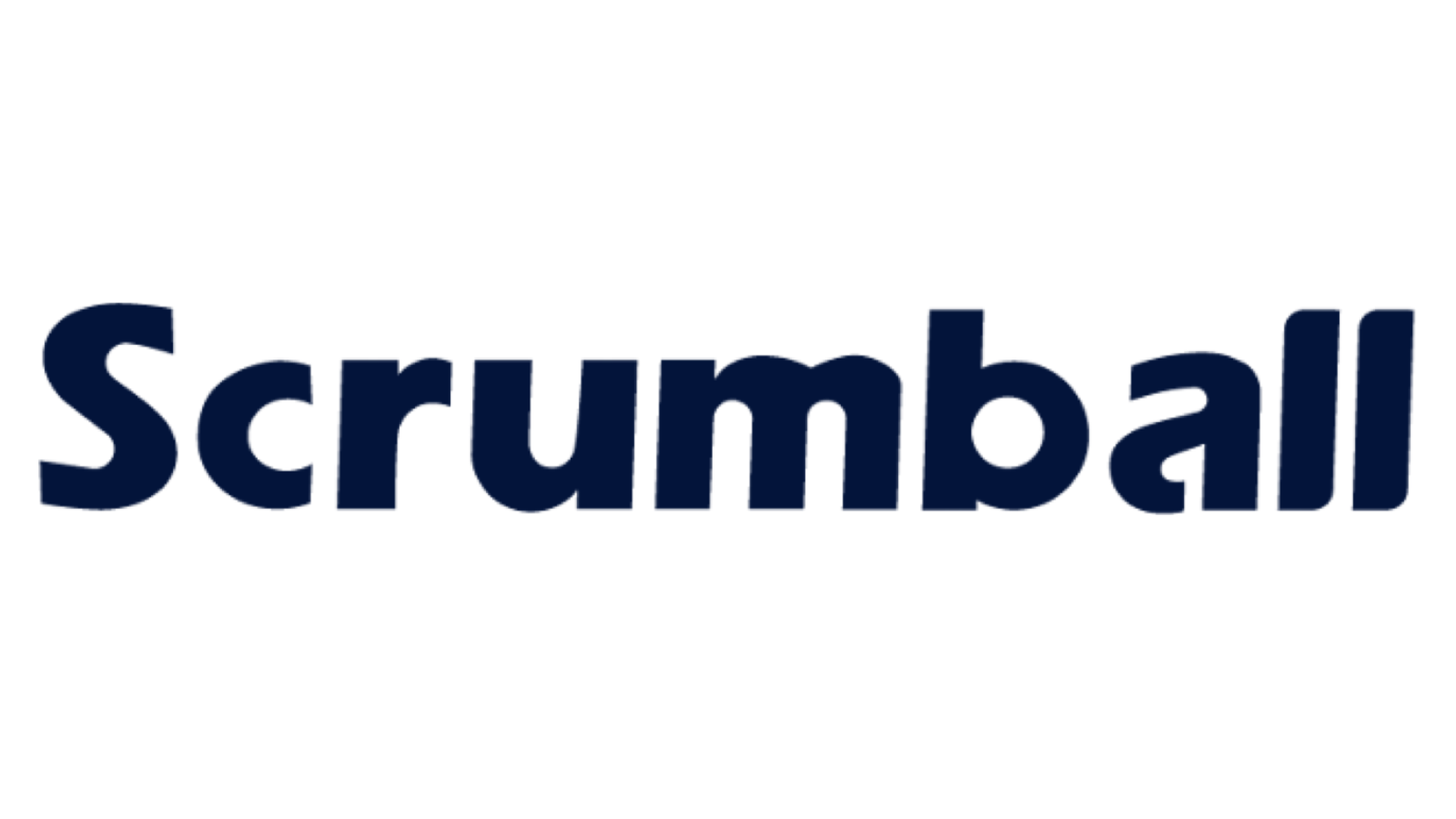Marketing Automation Best Practices to Boost ROI

Marketing automation streamlines repetitive tasks, helping you focus on strategy while improving efficiency. It plays a crucial role in boosting your return on investment by enabling precise targeting, better lead management, and enhanced customer experiences. For every dollar spent on marketing automation, businesses see an average ROI of $5.44, with revenue increasing by 34% in many cases.
However, maximizing ROI requires more than just basic automation. Advanced tactics, like leveraging customer data and automating workflows, allow you to deliver personalized experiences at scale. While 60% of marketers report improved targeting, challenges such as securing budgets or managing customer data often arise. Overcoming these hurdles ensures you unlock the full potential of marketing automation best practices.
Personalization at Scale

Dynamic Content for Engagement
Leveraging customer data for tailored experiences.
Content personalization is a cornerstone of effective marketing automation. By leveraging customer data, you can create tailored experiences that resonate with your audience. For example, platforms like Shein use customer segmentation to recommend products that align with individual preferences. Similarly, Amazon employs real-time personalized product suggestions based on items added to the cart, driving cross-selling opportunities. These strategies not only enhance engagement but also increase average order values.
To implement this, start by analyzing customer demographics, purchase history, and browsing behavior. Use marketing automation tools to dynamically adjust content, ensuring it aligns with each user's unique needs. Personalized messaging fosters stronger connections, making your campaigns more impactful.
Real-time personalization using automation tools.
Real-time personalization takes tailored experiences to the next level. Automation tools enable you to deliver relevant content instantly, based on user actions. For instance, Google Play Books sends notifications with discounts when wishlist items drop in price. This approach ensures your audience receives timely and meaningful offers, boosting engagement and conversions.
By integrating real-time personalization into your strategy, you can stay ahead of customer expectations. Use automation to monitor user behavior and trigger updates to your content in real time. This keeps your messaging fresh and relevant.
Behavioral Triggers for Relevance
Automating workflows based on user actions.
Behavioral triggers streamline your marketing efforts by automating workflows based on user actions. These triggers ensure that the right message reaches the right person at the right time. For example, when a customer abandons their cart, an automated email can remind them to complete their purchase. Similarly, post-purchase follow-ups can encourage repeat business.
Behavioral triggers also enhance the customer experience. They execute actions automatically, saving you time and ensuring timely communication. This makes your campaigns more efficient and effective.
Examples: abandoned cart emails, post-purchase follow-ups.
Successful campaigns often use behavioral triggers like abandoned cart emails. Personalization plays a key role here. Including the customer's name and images of the items left in their cart can significantly increase conversion rates. Timing is also crucial. Sending these emails promptly ensures your message remains relevant. Adding a clear call-to-action (CTA) further encourages customers to complete their purchase.
As Jordan Pritikin, a former marketing leader at HubSpot, said, "When you're writing an abandoned cart email, personalization is key." Post-purchase follow-ups, on the other hand, can include thank-you messages or recommendations for complementary products. These strategies build loyalty and drive additional sales.
Advanced Segmentation Techniques
Using demographics and behavior for precise targeting.
Targeting and segmentation allow you to focus your efforts on the most promising audience groups. By analyzing demographics and behavior, you can create highly targeted campaigns that address specific needs. This approach improves customer engagement and increases conversion rates. For instance, segmenting your audience by age, location, or purchase history enables you to deliver personalized messaging that resonates.
Precise segmentation also optimizes your marketing budget. By focusing on high-value segments, you can allocate resources more effectively, maximizing your ROI.
Automating segmentation updates for accuracy.
Automation ensures your segmentation remains accurate and up-to-date. Marketing automation tools can analyze new data and adjust segments automatically. This keeps your campaigns relevant and aligned with customer behavior. For example, if a customer’s preferences change, automation can update their segment and tailor future communications accordingly.
Advanced segmentation techniques offer several benefits, including smarter resource allocation, better lead quality, and enhanced brand loyalty. By automating updates, you can maintain precision and deliver consistent results.
Lead Scoring and Nurturing
Optimizing Lead Scoring Models
Incorporating predictive analytics for better scoring.
Predictive analytics transforms your lead scoring process by identifying patterns in historical data. It highlights attributes that lead to successful conversions. Machine learning algorithms predict which leads are most likely to convert, allowing you to focus on high-priority prospects. Dynamic scoring models adjust in real-time, ensuring your scoring reflects the latest data. This approach improves accuracy and helps you allocate resources effectively.
Using behavioral data to prioritize high-value leads.
Behavioral data provides valuable insights into lead interest and intent. Actions like website visits, content downloads, and email clicks reveal engagement levels. Leads who repeatedly perform high-value actions, such as attending events or interacting on social media, demonstrate growing interest. Automating your lead scoring process ensures real-time updates and smooth transitions to sales teams. Setting alerts for key scores allows timely follow-ups, increasing your chances of conversion.
Automated Nurture Campaigns
Multi-step email sequences for lead conversion.
Lead nurturing sequences guide prospects through the buyer’s journey with targeted communication. Multi-step email sequences build relationships by delivering educational content and social proof. For example, onboarding emails help new customers understand your product, while engagement emails maintain interest with urgency-driven messaging. Conversion-focused emails prompt specific actions, like booking a demo, using clear CTAs. These sequences ensure consistent engagement and higher conversion rates.
Personalizing campaigns based on lead behavior.
Personalization enhances the effectiveness of your lead nurturing efforts. By analyzing behavioral data, you can tailor messages to match each lead’s preferences. For instance, if a lead frequently visits a specific product page, you can send emails highlighting its benefits. Marketing automation tools streamline this process, ensuring timely and relevant communication. Personalized campaigns foster trust and improve the likelihood of conversion.
Aligning Sales and Marketing
Sharing lead data for improved collaboration.
Aligning sales and marketing teams improves lead nurturing and overall efficiency. Sharing lead data ensures both teams have access to the same insights, enabling better collaboration. For example, sales teams can use lead scores to prioritize outreach, while marketing teams can refine campaigns based on feedback. This alignment creates a seamless experience for your prospects.
Automating notifications for high-priority leads.
Automation bridges the gap between sales and marketing by streamlining communication. Notifications alert sales teams when leads reach critical scores, ensuring timely follow-ups. This reduces the risk of missed opportunities and enhances the customer experience. By automating these processes, you can focus on building stronger relationships and driving revenue growth.
Multi-Channel Marketing Automation Strategies

Email Campaign Automation
Best practices for consistent email campaigns.
Email campaigns remain one of the most effective marketing automation strategies. To ensure consistency, focus on maintaining a regular schedule and clear messaging. Use marketing automation tools to segment your audience and send personalized email campaigns tailored to their preferences. For example, welcome emails for new subscribers or re-engagement emails for inactive users can keep your audience engaged.
Always test your emails before sending them. Check for broken links, typos, and formatting issues. Use A/B testing to determine which subject lines or CTAs perform best. Consistency in tone and design across your emails builds trust and reinforces your brand identity.
Integrating email with other channels for synergy.
Integrating email with other channels amplifies your marketing efforts. For instance, you can use social media to promote your email campaigns or include links to your social profiles in your emails. This creates a cohesive experience for your audience.
| Benefit | Description |
|---|---|
| Increased Reach | Integrating email marketing with other channels allows you to reach a larger audience by leveraging social media, PPC advertising, and content marketing. |
| Enhanced Customer Engagement | Using social media to promote email campaigns or vice versa creates a cohesive customer experience that encourages engagement across all channels. |
| Improved Conversion Rates | Targeting your audience with personalized messages across multiple channels increases the likelihood of them taking action, such as making a purchase or signing up for a newsletter. |
| Better Tracking and Analytics | Integration enables more effective tracking and analysis of results, helping identify successful strategies and areas for improvement. |
| Cost-Effective | Leveraging multiple channels can help reach more people without significantly increasing the marketing budget, maximizing ROI. |
Social Media and Chatbots
Automating posts and customer engagement.
Social media automation simplifies your efforts to maintain an active presence. Tools like Hootsuite and Buffer allow you to schedule posts, track performance, and optimize content creation. These platforms ensure your brand stays visible without requiring constant manual updates.
Automating customer engagement on social media enhances responsiveness. For example, tools like Sprout Social and Podium use AI to manage interactions, answer queries, and even escalate issues to human agents when necessary. This approach saves time and ensures consistent communication with your audience.
Using chatbots for real-time interactions.
Chatbots revolutionize real-time customer engagement. AI-powered bots provide instant answers to common questions, improving user satisfaction. For example:
- AI chatbots handle 24/7 customer queries on websites or messaging apps.
- Virtual agents simulate human-like interactions using advanced AI.
- Agent assistance bots support service representatives by suggesting relevant information during conversations.
These tools streamline communication and enhance the overall customer experience.
SMS and Push Notifications
Automating timely and relevant messaging.
SMS and push notifications deliver time-sensitive messages directly to your audience. Use marketing automation tools to send reminders, promotions, or updates based on user behavior. For instance, you can notify customers about flash sales or appointment reminders. These messages are short, direct, and highly effective for grabbing attention.
Combining SMS with other channels for impact.
Combining SMS with email or social media creates a multi-channel strategy that maximizes engagement. SMS ensures immediate interaction, while email provides detailed information. Both channels are permission-based, ensuring your messages reach an interested audience. This combination enhances the quality of your interactions and increases the likelihood of conversions.
AI and Predictive Analytics for Improving ROI
AI-Driven Campaign Enhancements
Predicting trends and optimizing campaigns with AI.
AI has revolutionized how you approach complex campaigns by offering tools to predict trends and optimize performance. For instance:
- AI-powered platforms now allow you to provide reference images for visuals that align with your brand.
- Campaign-level negative keywords help refine ad targeting, ensuring better alignment with your goals.
- Enhanced creative reporting highlights underperforming assets and suggests actionable improvements.
These advancements make it easier to track campaign fluctuations and adjust strategies to maximize your return on investment. By leveraging AI, you can stay ahead of market trends and ensure your campaigns deliver measurable results.
Automating A/B testing for data-driven decisions.
AI simplifies A/B testing, making it more efficient and insightful. It forecasts outcomes based on historical data, helping you make informed decisions. AI also creates personalized testing scenarios for different customer segments, ensuring relevance. Additionally, it adjusts traffic distribution dynamically, prioritizing metrics that matter most to your goals. These capabilities reduce your customer acquisition cost while improving ROI by identifying what resonates best with your audience.
Predictive Analytics for Maximizing ROI
Identifying high-value leads and customers.
Predictive analytics helps you focus on leads most likely to convert. By analyzing historical data, you can identify patterns that signal high-value prospects. Automation tools enhance accuracy, allowing you to prioritize quality over quantity. Tailoring your marketing strategies based on these insights improves engagement and boosts ROI. Collaboration between teams ensures these insights are effectively applied, further maximizing ROI.
Forecasting outcomes for resource allocation.
Predictive analytics optimizes resource allocation by forecasting outcomes. Retailers, for example, use it to anticipate product demand, ensuring efficient inventory management. It also helps assess financial risks and predict project success, enabling smarter investments. By allocating resources based on data-driven insights, you can improve efficiency and achieve a higher return on investment.
Conversational AI and Chatbots
Automating customer interactions for efficiency.
Conversational AI enhances customer experiences by providing 24/7 personalized support. Chatbots handle repetitive tasks, reducing wait times and improving satisfaction. They also identify opportunities for up-selling and cross-selling, increasing revenue. As 81% of support leaders note, chatbots reduce employee attrition by automating routine tasks, allowing your team to focus on strategic activities.
Enhancing lead qualification with AI tools.
AI tools streamline lead qualification through techniques like natural language processing and behavioral analysis. Predictive analytics prioritizes leads with the highest conversion potential, while machine learning refines sales predictions. Automated lead nurturing ensures timely engagement, improving conversion rates. These tools make your lead qualification process more efficient, helping you achieve better results with less effort.
Performance Tracking and Continuous Optimization
Key Metrics for ROI Improvement
Tracking conversion rates and customer lifetime value.
Measuring ROI begins with tracking key metrics that reveal the effectiveness of your marketing efforts. Conversion rates show how many leads turn into paying customers, helping you identify successful strategies. Customer lifetime value estimates the total revenue a customer generates over their relationship with your business. This metric highlights the long-term impact of your campaigns.
| KPI | Description |
|---|---|
| Conversion Rates | Measures the percentage of leads that convert into customers. |
| Customer Lifetime Value | Estimates the total revenue a customer will generate during their lifetime. |
| Email Open Rates | Indicates the effectiveness of email campaigns in engaging recipients. |
| Lead Generation Metrics | Tracks the number of leads generated through marketing efforts. |
Companies using marketing automation tools often see an average ROI of $5.44 for every dollar spent. Businesses also recover their initial investment in under six months, with revenues increasing by 34%. These metrics provide a clear picture of your campaign’s success and guide future decisions.
Automating performance reports for actionable insights.
Automation simplifies performance reporting, saving time and ensuring accuracy. Set clear goals and choose relevant KPIs to measure progress. Use simple dashboards with visualizations to make data easy to interpret. For example, removing duplicate data ensures high-quality reports. Prioritizing data security protects sensitive information. These steps help you create actionable insights that drive better results.
Campaign Optimization Techniques
Identifying underperforming campaigns with automation.
Automation tools help you monitor campaign performance and identify areas needing improvement. Regularly review metrics like conversion rates to spot underperforming campaigns. Optimize workflows by removing unnecessary steps and updating triggers based on data. Documenting processes ensures consistency and clarity for your team.
| Best Practice | Description |
|---|---|
| Monitor campaign performance | Review campaign performance metrics quarterly to identify underperforming or obsolete campaigns. |
| Optimize workflows | Regularly review and optimize automation workflows by removing unnecessary steps and updating triggers based on data. |
| Document processes and rules | Document rules for data entry and automation workflows to ensure consistency and clarity for all users. |
Implementing data-driven changes for better results.
Data-driven changes improve campaign outcomes. For instance, Simplero refined its messaging strategy after conducting customer research. This clarified its target audience and enhanced its value proposition, leading to better engagement. Similarly, analyzing visitor data allows businesses to prioritize high-value leads in live chat, boosting conversions. These examples show how data insights can transform your campaigns.
Integrating Analytics with Automation
Connecting tools for seamless data visualization.
Integrating analytics with marketing automation tools creates a unified view of your performance. This integration automates data sharing, reducing manual tasks and errors. It also syncs data across platforms, enabling you to track ROI and other metrics effortlessly. For example, tools like Tableau or Power BI provide seamless data visualization, helping you identify trends and patterns.
| Benefit | Description |
|---|---|
| Improve workflows and processes | Automates data sharing, reducing manual tasks and errors. |
| Maximize your martech stack | Syncs data for a comprehensive view of marketing efforts, enabling data-driven decisions. |
| Identify areas for improvement | Helps pinpoint specific aspects that need enhancement. |
| Track key metrics | Enables monitoring of important metrics across various channels. |
Using insights to refine marketing strategies.
Analytics provide actionable insights that refine your strategies. For example, EasyJet used customer travel history to create personalized campaigns, doubling open rates and increasing click-through rates by 25%. Similarly, Sephora leveraged analytics to offer tailored product recommendations, enhancing customer satisfaction. These insights help you optimize campaigns and allocate resources effectively.
Advanced marketing automation strategies empower you to streamline processes, personalize experiences, and optimize campaigns. These tactics help you achieve measurable results while maximizing your ROI.
By leveraging tools like AI, predictive analytics, and multi-channel automation, you can stay ahead of the competition and deliver value to your audience.
Start implementing these best practices today. Focus on continuous improvement and data-driven decisions to unlock your marketing potential. The right strategies will not only boost your ROI but also strengthen your connection with your customers.
FAQ
What is marketing automation, and why is it important?
Marketing automation uses software to streamline repetitive tasks like email campaigns, social media posting, and lead nurturing. It helps you save time, improve efficiency, and deliver personalized experiences. By automating processes, you can focus on strategy and achieve better ROI.
How can marketing automation improve ROI?
Automation enhances targeting, personalization, and lead management. It ensures timely communication and reduces manual errors. By using data-driven insights, you can optimize campaigns, allocate resources effectively, and convert more leads into customers, ultimately boosting your ROI.
What tools are best for marketing automation?
Popular tools include HubSpot, Marketo, ActiveCampaign, and Mailchimp. Each offers features like email automation, lead scoring, and analytics. Choose a tool based on your business size, goals, and budget. Test different platforms to find the one that fits your needs.
How do I start with marketing automation?
Begin by identifying repetitive tasks you want to automate. Set clear goals, like increasing conversions or improving engagement. Choose a marketing automation tool, integrate it with your existing systems, and create workflows. Monitor performance and adjust strategies as needed.
Can small businesses benefit from marketing automation?
Yes, small businesses can use automation to compete with larger companies. It helps you save time, engage customers, and scale operations. Affordable tools like Mailchimp or ActiveCampaign offer features tailored for small businesses, making automation accessible and effective.
See Also
7 Key Steps For Determining Content Marketing Returns
Exploring Product Seeding Techniques In Today's Marketing
Practical Influencer Marketing Data For Better Strategies
